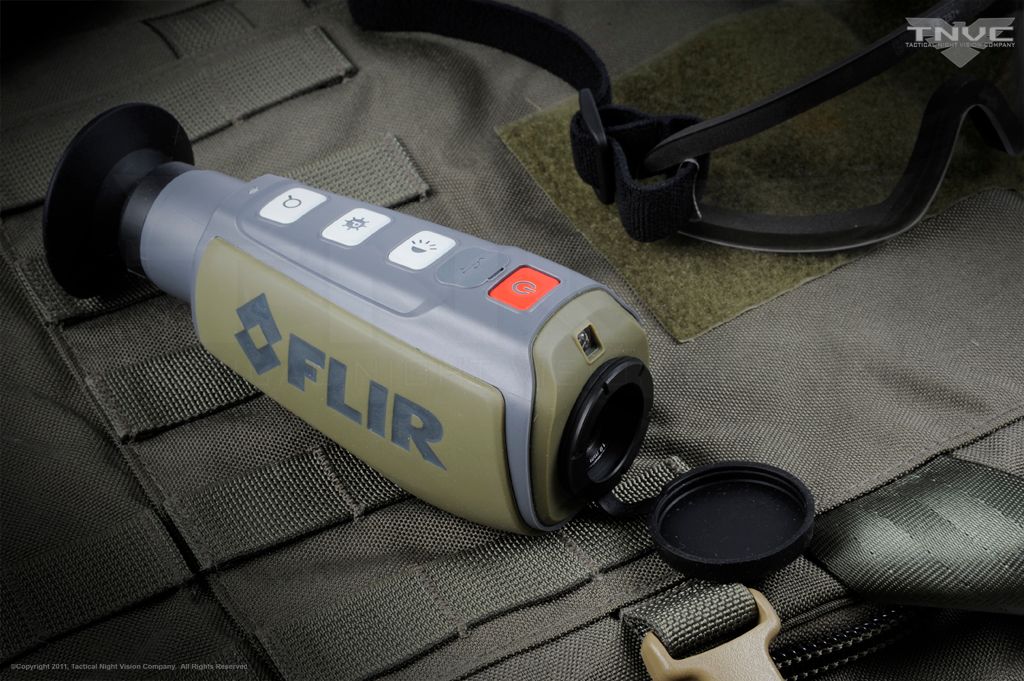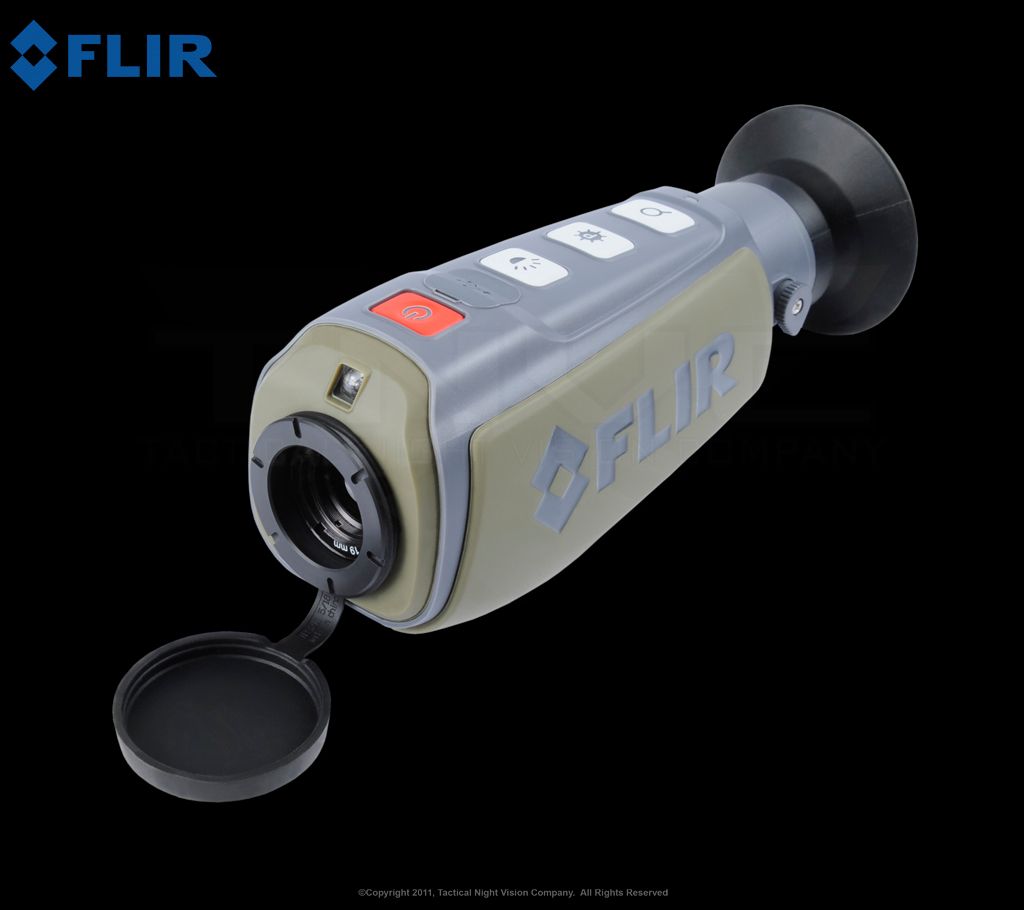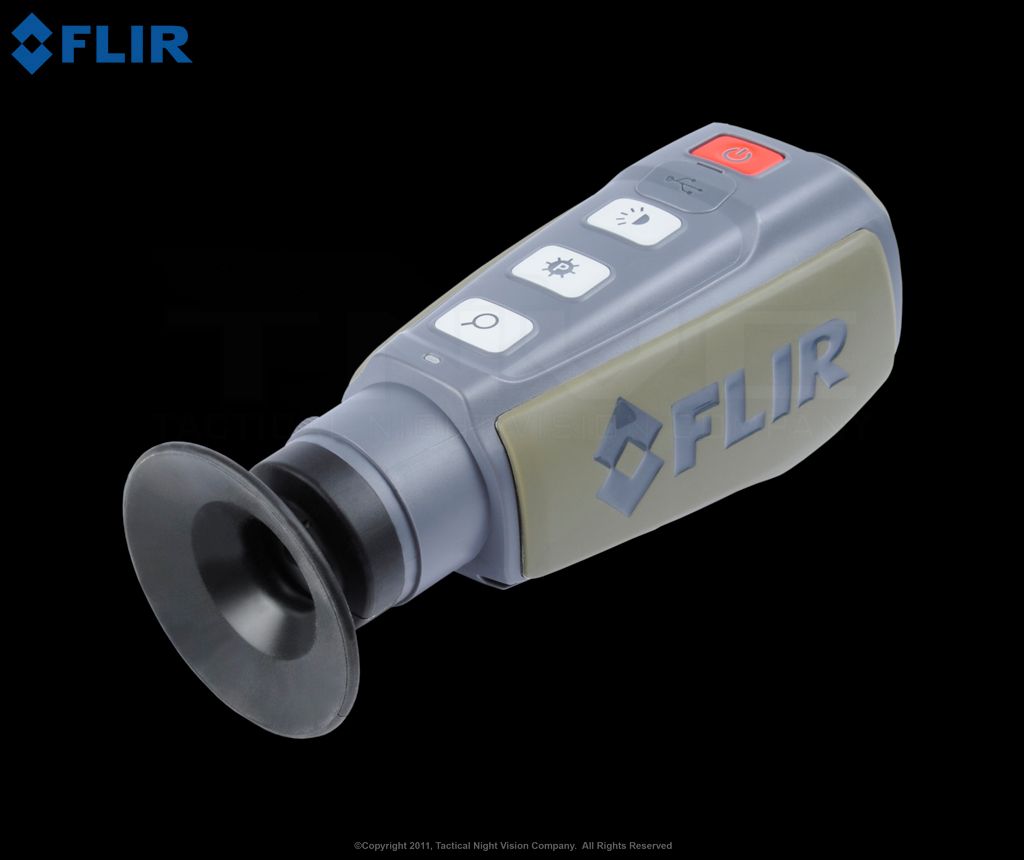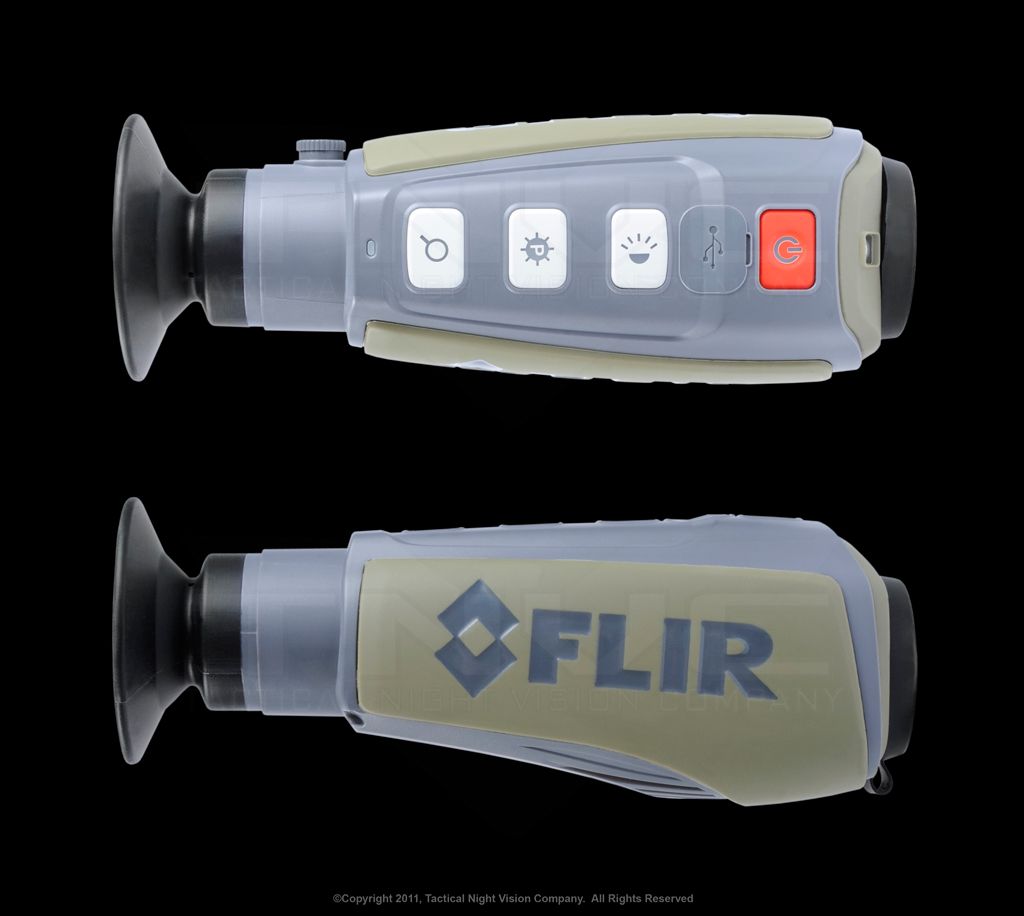Good morning ladies and gents.
I just spent 5 hours roaming around with the new FLIR PS32 http://www.tnvc.com/shop/flir-scout-ps32/ last night. I must say I am impressed. FLIR first released information about the PS series earlier this summer and we have been eagerly awaiting its release. What makes this product so special? Well, everything... and nothing. That's the beauty of it: simplicity. The PS32 and its sister, the PS24 represent a new line of FLIR Thermal Imagers for the hunting and sporting market. Listening to customer feedback, FLIR realized that users want a compact, lightweight, rugged, high-performing imager at an affordable price. And that is exactly what they delivered. The PS32 is all that and comes in at a price tag of $2,999. The PS24 sells for $1,999. This means they are the most affordable thermal imagers in their class. Hell, they even out-perform their competitors that have lower specs and higher prices!



OK, so enough of the "car commercial" talk. Lets talk turkey: The PS32 has a 320 x 240 detector and a 9 Hz refresh rate. I know, know: guys want a 30 Hz system, but that ain't gonna happen, so we won't dwell on it. Those of you familiar with 320 x 240 systems know what it looks like. Impressive. The image quality is just what you would expect. I was able to decipher recognizable detail out to about 75 yards. What I mean is that I could see enough shading in the gray-scale to recognize animals and people. Past that, I could tell by the resolution of the image shapes what kind of animal I was looking at out to about 250 yards. The detection range was good out to 500 as advertised. The sensor is sensitive enough to be used for checking structural heat loss too. Like other systems of its caliber, I could easily see the studs in my walls and see if my house was losing heat anywhere (it wasn't).
The 9 Hz refresh rate is not bad. Sure, it's slower than higher-rated government systems, but for the hunter and outdoorsman, who are not on a two-way range, the system performs admirably. I walked around in a field, the woods, and an urban setting, looking only through the PS32. Using it for navigation like this, I was able to get a feel for how the refresh rate affects real-time viewing. I didn't notice any real slowdown as I walked normally. There was the normal milisecond lag behind real-time for a 9 Hz system, but nothing that affected the usability of the unit as a navigation aid in any way. The only time the 9 Hz refresh rate became really noticeable was when I would quickly pan the unit around. I would hear the typical click of the shutter and the image would freeze and change to catch up. But, this is typical performance for a 9 Hz system. Fast moving objects (a running dog in this case) were not affecting the frame rate and I could easily track a dog running at distance while the imager panned.


Let's talk features. The PS series is relatively bare of features. FLIR wanted this unit to be a no-frills imager. In fact, it is just that: an imager. No camera, no, reticle, no weapon mount, etc. It is an imager only. The controls are simple with manual focus, brightness, and polarity adjustment. The PS32 also has a 2x electronic zoom (the PS24 does not have the zoom feature). A small LED task light is on the front of the unit. The PS series has both white and black hot polarity as well as FLIR's proprietary Instalert mode. This paints moving objects in red to make them easier to spot during long periods behind the scope.
Physically, the PS32 is the smallest of the FLIR commercial line. It literally fits in the palm of your hand and is about the size of a PVS-14. It weighs only 12 oz, so it is easy to hold up and look through for long periods of time. A wrist strap keeps it tethered to your arm while being used. It features a standard tripod threaded insert on the bottom as well. It is apparent that the PS32 was designed for ergonomics. Its smooth lines and rounded edges insure good purchase on the unit and its controls are easily found by your fingers. They are somewhat recessed on top of the housing to keep from accidental activation.
The PS32 and PS24 have internal, rechargeable Li/Ion batteries. This takes some of the size and weight out of the housing to make it even more portable. An included USB cable with AC adapter allow it to be plugged into a wall outlet and a charging dock can be purchased separately. The battery life is approx 5 hours on a full charge. I was testing it in 40 degree weather at night and got about 5 hours out of it. No word yet on a car charger, but I would imagine that it is coming.
Overall, we are extremely impressed with the PS series. You simply cannot beat the price point and value. If you have been wanting a thermal imager, but thought they were out of reach because of the price, your wait is over. Just in time for the holidays, the PS series is here.
I just spent 5 hours roaming around with the new FLIR PS32 http://www.tnvc.com/shop/flir-scout-ps32/ last night. I must say I am impressed. FLIR first released information about the PS series earlier this summer and we have been eagerly awaiting its release. What makes this product so special? Well, everything... and nothing. That's the beauty of it: simplicity. The PS32 and its sister, the PS24 represent a new line of FLIR Thermal Imagers for the hunting and sporting market. Listening to customer feedback, FLIR realized that users want a compact, lightweight, rugged, high-performing imager at an affordable price. And that is exactly what they delivered. The PS32 is all that and comes in at a price tag of $2,999. The PS24 sells for $1,999. This means they are the most affordable thermal imagers in their class. Hell, they even out-perform their competitors that have lower specs and higher prices!



OK, so enough of the "car commercial" talk. Lets talk turkey: The PS32 has a 320 x 240 detector and a 9 Hz refresh rate. I know, know: guys want a 30 Hz system, but that ain't gonna happen, so we won't dwell on it. Those of you familiar with 320 x 240 systems know what it looks like. Impressive. The image quality is just what you would expect. I was able to decipher recognizable detail out to about 75 yards. What I mean is that I could see enough shading in the gray-scale to recognize animals and people. Past that, I could tell by the resolution of the image shapes what kind of animal I was looking at out to about 250 yards. The detection range was good out to 500 as advertised. The sensor is sensitive enough to be used for checking structural heat loss too. Like other systems of its caliber, I could easily see the studs in my walls and see if my house was losing heat anywhere (it wasn't).
The 9 Hz refresh rate is not bad. Sure, it's slower than higher-rated government systems, but for the hunter and outdoorsman, who are not on a two-way range, the system performs admirably. I walked around in a field, the woods, and an urban setting, looking only through the PS32. Using it for navigation like this, I was able to get a feel for how the refresh rate affects real-time viewing. I didn't notice any real slowdown as I walked normally. There was the normal milisecond lag behind real-time for a 9 Hz system, but nothing that affected the usability of the unit as a navigation aid in any way. The only time the 9 Hz refresh rate became really noticeable was when I would quickly pan the unit around. I would hear the typical click of the shutter and the image would freeze and change to catch up. But, this is typical performance for a 9 Hz system. Fast moving objects (a running dog in this case) were not affecting the frame rate and I could easily track a dog running at distance while the imager panned.


Let's talk features. The PS series is relatively bare of features. FLIR wanted this unit to be a no-frills imager. In fact, it is just that: an imager. No camera, no, reticle, no weapon mount, etc. It is an imager only. The controls are simple with manual focus, brightness, and polarity adjustment. The PS32 also has a 2x electronic zoom (the PS24 does not have the zoom feature). A small LED task light is on the front of the unit. The PS series has both white and black hot polarity as well as FLIR's proprietary Instalert mode. This paints moving objects in red to make them easier to spot during long periods behind the scope.
Physically, the PS32 is the smallest of the FLIR commercial line. It literally fits in the palm of your hand and is about the size of a PVS-14. It weighs only 12 oz, so it is easy to hold up and look through for long periods of time. A wrist strap keeps it tethered to your arm while being used. It features a standard tripod threaded insert on the bottom as well. It is apparent that the PS32 was designed for ergonomics. Its smooth lines and rounded edges insure good purchase on the unit and its controls are easily found by your fingers. They are somewhat recessed on top of the housing to keep from accidental activation.
The PS32 and PS24 have internal, rechargeable Li/Ion batteries. This takes some of the size and weight out of the housing to make it even more portable. An included USB cable with AC adapter allow it to be plugged into a wall outlet and a charging dock can be purchased separately. The battery life is approx 5 hours on a full charge. I was testing it in 40 degree weather at night and got about 5 hours out of it. No word yet on a car charger, but I would imagine that it is coming.
Overall, we are extremely impressed with the PS series. You simply cannot beat the price point and value. If you have been wanting a thermal imager, but thought they were out of reach because of the price, your wait is over. Just in time for the holidays, the PS series is here.

